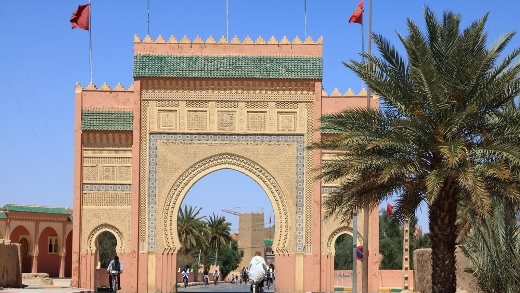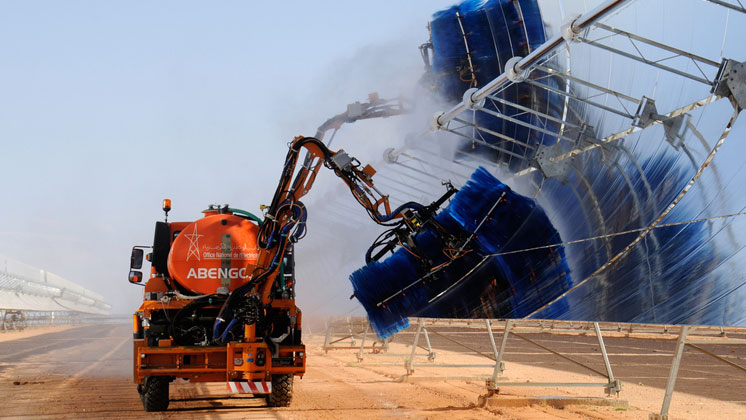About 120,000 people living in and around three remote towns at the foot of the Atlas mountains—Erfoud, Missour, and Zagora—will have a more reliable supply of power when a project to install solar photovoltaic (PV) plants moves ahead in the stretches of stony desert that surround them. Located far from Morocco’s main power stations on the Atlantic and Mediterranean coasts, voltage in this region is often so low and unstable that light bulbs dim, computer screens flicker, and hospital equipment malfunctions. This new—and clean—supply of power will be able to add generation capacity, while preventing sharp drops in voltage, as well as power outages.
These will be Morocco’s first mid-size, decentralized solar PV plants. Solar PV modules convert solar irradiation into direct currents of electrical power. Although cheaper to install than Concentrated Solar Power (CSP) plants, the storage options for solar PV are much more expensive. Therefore, at utility level, PV plants do not usually store power for later—for example, for use at night or on cloudy days. So because of the way it works, and because of the short time between generating and distributing the electricity it creates, solar PV is most often used to generate power close to where it is needed.
Globally, in terms of installed capacity, solar PV is now, after hydro- (water) and wind power, the third most important source of renewable energy. However, Morocco has only 20 megawatts (MW) of solar power in operation from a hybrid plant in Ain Beni Mathar in eastern Morocco, which uses combined energy generated by both solar and natural gas. A 160 MW CSP plant is also in an advanced stage of construction, and another project is being finalized for a 350 MW CSP plant. These CSP projects have all been funded by the World Bank, in collaboration with the Global Environment Fund for the Ain Beni Mathar hybrid plant, and with the Clean Technology Fund for the two CSP plants.
Along with CSP, Morocco’s state-owned electricity and water company, Office National de l’Electricite et de l’Eau Potable (ONEE), is committed to installing 400 MW of solar PV as part of its national goal of generating 2,000 MW from renewable energy by 2020. The current PV project, also funded by the World Bank, will contribute 75 MW to that goal.


